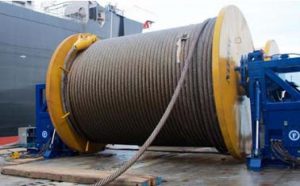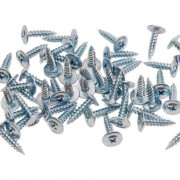10 Tips To Follow For Fastening Heavy Equipment To Their Bases
Fastening of equipment to their bases is never something that you can take for granted, particularly if the equipment in question is mobile. One of the major mistakes that most people make is simply thinking that as long as the bolts can’t be easily moved, the machinery will be fine.

However, the truth is that when it comes to the fastening of machinery on a base, you can’t afford to not be accurate. There are some important things you need to keep in mind in order to get it right, including:
- Only tighten the bolts to the base once the grout is cured
In order to fasten a machine, you will need to construct a base for it. It is through this base that you will then need to fasten your Inconel hex head bolts or alloy 20 hex tap bolts. However, you have to remember that it is the base that will keep the bolt in place. If the grout is not cured, the bolt will definitely loosened after some time.
- The anchor bolts you use should be designed for this specific purpose
How much does the machine weigh? What are the environmental conditions like? Is the machine likely to vibrate a lot? All these questions and more should determine the types of bolts to get for the installation.
- The bolts should be installed perpendicular to the base
Installing them sideways or diagonally is likely to compromise the mechanics of the fasteners.
- Always factor in bolt stretch during the design process
This is normally done by sleeving around 3 inches under the base.
- When tightening the bolts, remove the levelling bolts
Levelling bolts are usually there only to ensure that the machine does not slant on its base. If you install the anchoring bolts with them in place, there might be opposing loads that could damage one of the fasteners.
- Once you remove the levelling bolts, fill their holes with RTV
If you leave the holes unfilled, water is likely to accumulate in them. This will in turn undermine the base, leading to gradual damage. It will also allow the machine to jiggle too much during operation.
- Use washers that will not cup
You will need to tighten the anchor bolts well in order to guarantee the stability of the machine. This, combined with the weight of the machine, could cause washer cupping. This is avoided by using washer that won’t cup, such as Grade 8 ones.
- Keep an eye on torque
When fastening the bolts, don’t do so blindly. Always keep the bolt manufacturer’s specifications in mind, and always ensure that each bolt is tightened to the correct torque setting.
- Use bolts whose threads extend beyond the nut
This ensures that the bolt is firmly in place, and also makes it easier to undo it in future.
- Make sure the bolts are at the correct depth
A rule of thumb you can follow is a depth equivalent to one bolt cross section at the minimum.
About the Author

Started my career in the fastener world in 1969 at, Parker Kalon Corp. a NJ based screw manufacturer located in Clifton, NJ working in inventory control, scheduling secondary production and concluding there in purchasing. In 1971 I accepted a sales position at Star Stainless Screw Co., Totowa, NJ working in inside sales and later as an outside salesman, having a successful career at Star I had the desire with a friend to start our own fastener distribution company in 1980 named: Divspec, Kenilworth, NJ. This was a successful adventure but ended in 1985 with me starting Melfast in August 1985 and have stayed competitive and successful to date. Melfast serves the OEM market with approximately 400 accounts nationally.
